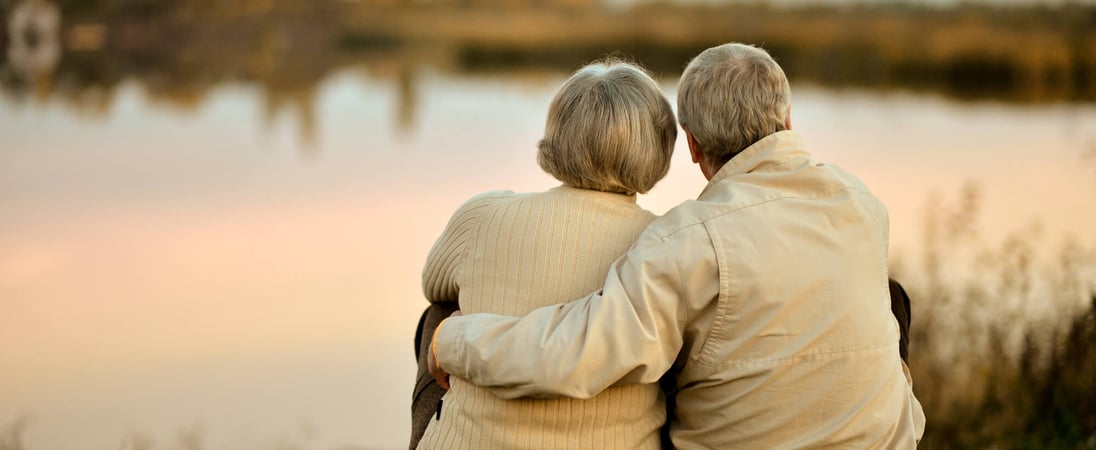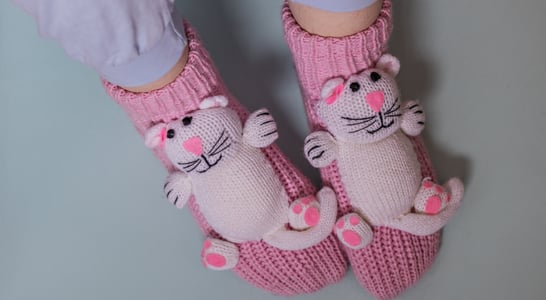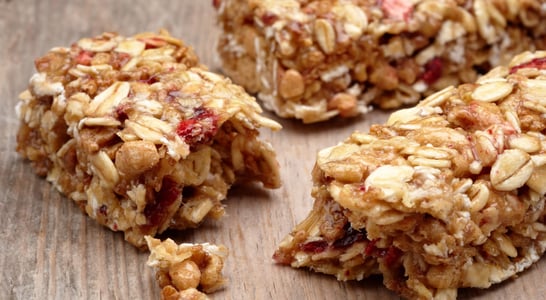
National Hugging Day
Have a heartfelt cuddle with loved ones, try out different embraces like the bear hug or raise awareness of affection's health benefits.
Hugging, one of the simplest ways to show affection, is something people do with their loved ones all the time.
However, it is not something that’s done enough these days! National Hugging Day aims to encourage people to hug more, whether they know the person or not.
National Hugging Day also helps people understand their emotions, as hugging makes feeling a more accepted practice and allows people to connect with one another on a more intimate level.
How to Celebrate National Hugging Day
Hug a Loved One
The best way you can celebrate this holiday is by hugging people! Hug your mom, your dad, your grandparents, your kids – hug everyone you know.
If you are more bold about your emotions, give free hugs to the people in your neighborhood!
There will most likely be people out there willing to give hugs back because this day is all about spreading love. Share this holiday with friends and colleagues and encourage them to hug everyone they know, love, and meet!
Try Unique Kinds of Hugs
National Hugging Day organizers point to several different types of hugs you can try on the day. The back to front hug is a type of hug you can use to provide affection to somebody from behind. For instance, you could hug your spouse back to front as they do the washing up to show your support.
Another option is the traditional bear hug. This type of hug is widely considered to be the strongest of the lot!
Here you add a little squeeze to your embrace, reminiscent of the strength of the bear. National Hugging Day organizers suggest that you avoid some of the more extreme incarnations of the bear hug.
You don’t need to lift people into the air or suffocate them by collapsing their lungs. Displays of love shouldn’t transform into a visit to the emergency room.
The cheek hug is also becoming increasingly popular too, according to the organizers. It is a type of hug that allows you to keep your distance but also offers affection. It is particularly appropriate for older people who may experience pain while in a traditional embrace.
Share About National Hugging Day
To celebrate this day, you might want to raise awareness of why National Hugging Day is so important. It is an opportunity to push back against fear and isolation and join together as communities. Everyone agrees that there’s a need for more love and compassion in the world.
Hugging helps to break down both physical and emotional barriers between people, creating a better society in the process.
So hop onto social media, make a promo campaign in the community or come up with some other ideas to let the world know about this healthy and happy event!
History of National Hugging Day
First celebrated in 1986, National Hugging Day became a popular holiday through the fact that people just like the idea of it.
Founded by Kevin Zaborney, he thought of the idea for the holiday after noticing how in between Christmas time, New Year’s, and Valentine’s Day, people tend to be in low spirits despite how positive the holidays are.
In the United States, studies have shown that people tend not to show their emotions in public, and with National Hugging Day, it aims to change the way people look at emotions.
Hugging has many benefits; it helps reduce stress by showing support, helps boost the immune system, improves heart health, and produces oxytocin, a brain chemical associated with happiness.
On this day, people take the time to hug their loved ones. On the National Hugging Day official website, competitions are held to see who gives the best hugs, with contestants coming from all over the world.
Hugging is a form of sharing support; it makes people happy, it shows compassion and understanding, and hugging shows that emotions are okay to feel because they’re normal.
Kids especially love this holiday, as they are generally the ones who hug people the most and aren’t afraid to show their emotions. In a society that appears cold and uncaring, there are a lot of places that have a lot of hope in them; National Hugging Day is just one example of that hope.
Historically, the day was designed to be an in-person event. The idea was to get more people to show their emotions publicly and to get comfortable with that fact. There was a need for individuals to open up to others in their society and show how they felt.
With the advent of the internet, however, National Hugging Day evolved. All of a sudden, it was possible for people anywhere in the world to remotely display their affections. The virtual hug became a pop phenomenon, assisted by video calling tools that became cheap and ubiquitous.
National Hugging Day’s organizers fear that humanity has become more isolated and fearful. Trends in society make it so that people feel less safe, leaving the confines of their homes and going out to meet other people. Sometimes the threats are real, and sometimes they are in their imagination.
National Hugging Day, therefore, is designed as a tool people can use to break down barriers and show signs of affection and support to each other. The day is proof that people can come together in a display of love, even if events in the outside world feel uncontrollable or depressing.
National Hugging Day is keen to emphasize consensual hugging. Therefore, people celebrating the day should always ask the permission of the person they want to hug first, before embracing them. Some people might not feel comfortable with it, so it is essential to be sensitive to that.
If people don’t want a physical hug, there are still ways to virtually or metaphorically embrace them with your words and deeds.
National Hugging Day Timeline
1986
National Hugging Day is first celebrated
Founder Kevin Zaborney, of Michigan, USA, notices how people are often in low spirits after the winter holidays, so he creates a day to offer positivity and generosity to the world through hugging.[1]
2004
Free Hugs Campaign begins
Juan Mann (a pseudonym), a native of Sydney, Australia, gets inspired that life could be a whole lot brighter if people had more human contact. So he begins the ‘Free Hugs’ Campaign where eventually other volunteers joined him in handing out hugs to strangers.[2]
2007
Illustrated Guide to Free Hugs is published
In an effort to promote inspire people to more hugging, Juan Mann writes the Illustrated Guide to Free Hugs. The lighthearted books offers reasons behind hugging, types of hugs, quotes about hugging and much more.[3]
2014
Study suggests that hugging is healthy
In a study of more than 400 people, results seem to show that people who give and receive hugs, along with other emotional support, may be 30% less likely to get sick from certain contagious illnesses (such as the common cold), in addition to recovering from illness more quickly.[4]
2017
Narendra Modi hugs Donald Trump
In a stealthy move, the Prime Minister of India goes around then-US-President Donald Trump’s infamously awkward handshake, turning it into a giant bear hug (which is then followed by another awkward handshake).[5]
National Hugging Day FAQs
Did ancient cultures have specific rituals involving hugs?
Yes! Ancient Egyptian art depicts embraces as symbols of spiritual connection.
Hugging rituals also appeared in early Hindu and Buddhist practices, seen as a way to exchange positive energy.
In many Indigenous cultures, hugging was a greeting or part of healing practices. Across these traditions, hugs signified trust and a connection between people.
Is there a “right” way to hug, according to psychology?
According to psychologists, a good hug lasts at least six seconds. A “heart-to-heart” hug—where both people’s hearts align on the left—may feel more intimate and calming.
Studies suggest hugging with intent and awareness can boost feelings of happiness and decrease stress more than a casual squeeze.
What unusual ways do different cultures celebrate the idea of Hugging Day?
In Japan, “free hugs” events are popular, especially in bustling city squares.
In Sweden, people engage in “Hug Fika,” where they combine hugs with their tradition of coffee and socialization.
India has an informal “hugging guru,” Mata Amritanandamayi, who travels worldwide offering thousands of hugs as blessings.
What myths or misconceptions exist about hugging?
One misconception is that hugs are universally welcomed. Some cultures, like in East Asia, traditionally avoid hugs due to personal space values.
Another myth is that short hugs don’t make an impact, but even brief touches can release oxytocin and reduce cortisol.
How does science explain the “warm and fuzzy” feeling from a hug?
Hugs trigger the release of oxytocin, also called the “cuddle hormone.” Oxytocin promotes bonding and decreases stress.
Research shows oxytocin is linked to feelings of trust and compassion, and it plays a role in reducing blood pressure and improving sleep.
Are there cultural taboos around hugging?
Yes, in some countries, public hugging may be frowned upon. For instance, in Saudi Arabia and parts of the Middle East, non-familial public hugging is discouraged.
Meanwhile, Russia has its own etiquette, where hugs are reserved for close friends and family.
Who holds the record for the longest hug?
The record for the longest hug belongs to Ron O’Neil and Theresa Kerr from Canada, who hugged for an incredible 24 hours and 33 minutes in 2010!
The couple wanted to raise awareness about the emotional and physical benefits of hugging.
What are “hugging circles,” and how are they used today?
Hugging circles are community events where people gather in a circle to give and receive hugs.
These circles, popularized in wellness and mindfulness communities, are designed to foster trust and reduce social anxiety. Many therapists now recommend them to help with isolation and stress.
Are there fun or unusual greeting alternatives to hugs?
In New Zealand, the Maori greet each other with the “hongi,” a forehead and nose touch symbolizing shared breath.
Similarly, Tibetans traditionally stick out their tongues as a friendly greeting. These unique gestures show affection or respect, much like a hug.
Do animals hug, and if so, why?
Yes, animals hug or engage in similar behaviors to bond. Bonobos hug for social bonding, while penguins “cuddle” to share warmth. Elephants entwine their trunks as a comforting gesture, a form of “hugging” that shows affection.
Also on ...
View all holidaysNational Cheesy Socks Day
Transform your sock game with outrageously hilarious novelty socks! They'll make your feet feel fancy and your friends laugh out loud.
National Granola Bar Day
Unleash your snack time superhero with these power-packed, on-the-go bites. Energize your day with a tasty blend of wholesome ingredients and unstoppable deliciousness!
National Squirrel Appreciation Day
With their bushy tails and quick movements, these little creatures are a joy to watch as they scamper through the trees and hunt for nuts.
One-Liners Day
Dad jokes, puns, groaners and one-liners all seem to have their own place in the world of humor and comedy that can cause a huge guffaw, a little chuckle or perhaps an eye roll. In any case, the one-liner is delivered quickly and easily, with a side of wit and...



